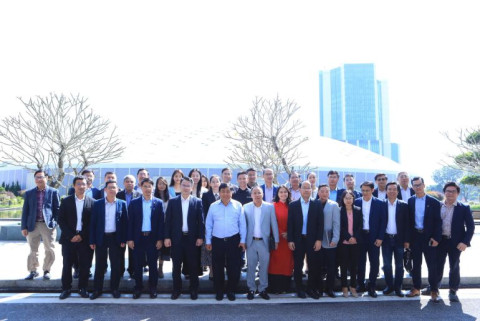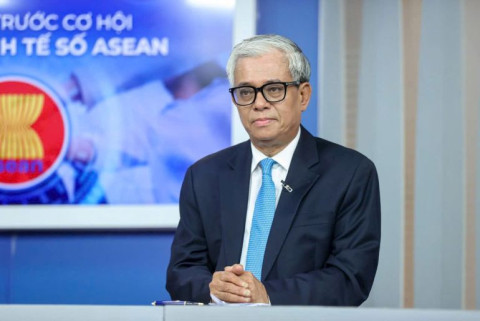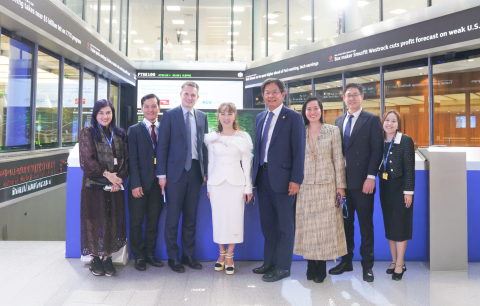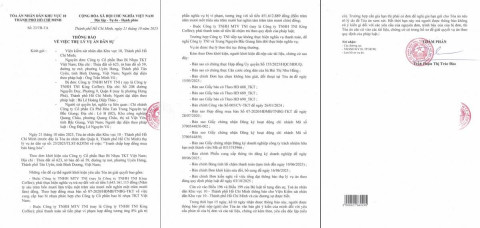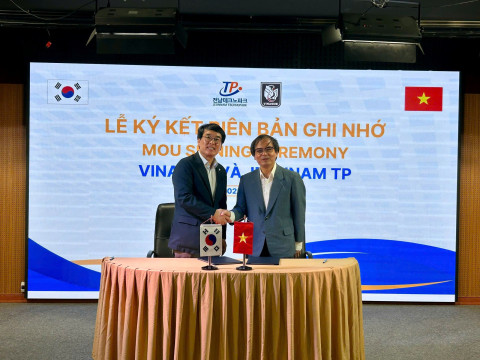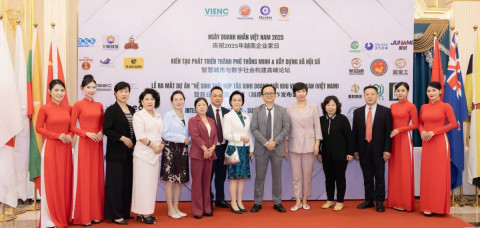The Ministry of Construction aims to have 1,000 - 1,200 urban areas by 2030
- 212
- Business
- 01:36 23/03/2023
DNHN - The Ministry of Construction aims for the ratio of urban construction land to total natural land area to reach between 1.9 and 2.3% by 2030; the number of municipalities in the country is approximately 1,000.
According to the Ministry of Construction's plan, there are three primary objectives: first, the national urbanization rate will reach at least 45% by 2025, and over 50% by 2030; the ratio of urban construction land to total natural land area will reach between 1.5 and 1.9% by 2025, and between 1.9 and 2.2% by 2030.
Second, the number of urban centers in the United States will range between 950 and 1,000 by 2025, and between 1,000 and 1,200 by 2030. By 2025, 100 percent of existing and new urban centers will have master plans, zoning plans, and programs of urban renovation, embellishment, reconstruction, and development; ensuring that 100 percent of grade 3 or higher urban centers meet the criteria for urban classification in terms of urban infrastructure, particularly infrastructure for healthcare, education, training, and urban-level cultural works.
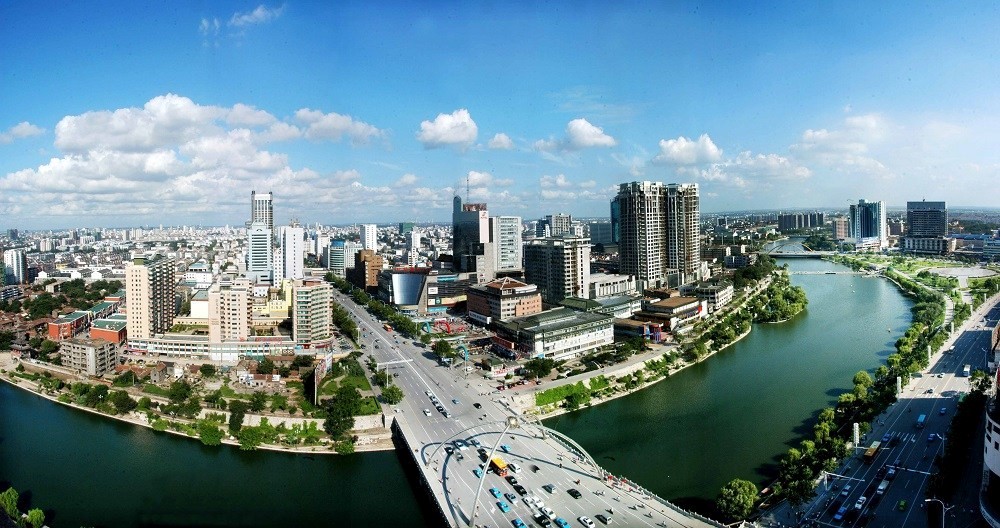
By 2030, establish several urban centers at the national and regional levels, achieving urban-level health, education, training, and culture targets comparable to the average level of cities in the group of four countries. leading ASEAN oil.
Thirdly, the ratio of traffic land to urban development land will reach 11 to 16% in 2025 and 16 to 26% in 2030. By 2030, the average green tree area per urban resident will be approximately 8-10 m2. The average residential floor area per person in urban areas will reach a minimum of 28 m2 by 2025, and a minimum of 32 m2 by 2030.
Vietnam's urbanization rate will be in the middle to upper range of ASEAN and Asia by 2045. The urban system is linked into a synchronous, unified, and balanced network between regions and regions, capable of coping with and adapting to climate change, preventing and combating natural disasters, and epidemics, and protecting the environment, with architecture that is characterized by a strong sense of identity and is green, contemporary, and intelligent. Vietnam intends to construct at least five cities of international stature, which will serve as hubs to connect and develop regional and international networks. The economic structure of urban areas evolves in a modern direction, with a large proportion of green economic sectors and digital economy.

Concerning urban development, the Government's Action Program to implement Resolution No. 06-NQ/TW has established 15 groups of specific goals for green urban development, environmental sanitation, and pollution reduction. Greenhouse gas emissions, climate change adaptation, and sustainable and intelligent development. Due to the lofty nature of the objectives, achieving them necessitates a new way of thinking, approach, and substantial implementation effort. With this request, based on the guiding views of Resolution No. 06-NQ/TW and Resolution No. 148/NQ-CP, the Prime Minister requested that ministries, branches, localities, and advisory agencies develop implementation plans with a focus on a few key guiding principles.
Specifically, ministries, branches, and localities must adhere to reality, originate from reality, respect objective reality, and establish goals and tasks based on a precise evaluation of the current situation. The situation that is plausible and plausible.
The planning work must be one step ahead, require innovative thought and strategic vision, incorporate the unique potentials, outstanding opportunities, and competitive advantages of the locality, province, and region, and develop the identification of weaknesses to address them appropriately. The guiding ideology must determine the significance of planning work, planning to create resources, and investing appropriately in planning work to produce optimal resources. In contrast, a lack of investment in planning work can result in resource waste within the implementation organization, unsustainable development, and the inability to achieve breakthroughs. The planning work must be exhaustive, but the implementation must be divergent; wherever the resources can be used, the implementation must have a focus; the focus must be compatible with the available resources and time; the need to do the work is certain; therefore, it must be completed. get it done, and avoid spreading.
PV (t/h)
Related news
- Connecting Leaders, Shaping the Future: Strategic Leadership Planning Meeting – CorporateConnections Hanoi A
- Sunlight - Unilever Vietnam Recognized for Outstanding Contributions to the National Initiative Supporting Women Entrepreneurs
- Deputy Prime Minister Nguyễn Chí Dũng: “The country’s major challenges weigh heavily on my mind — and we must resolve them together.
- Unitsky String Technologies signs cooperation agreements with three Vietnamese partners, opening a new direction for smart mobility and sustainable development
- When artists do business – livelihood is no poetry!
- Before the D‑day to abolish flat‑rate tax: Fear of technology and costs leave small traders struggling to adapt
- Vietnamese enterprises at a crossroads: the impact of a potential US–China deal
- "Digital technicians" must not be forgotten if Vietnam aims to meet its strategic goals
- HDBank: Impressive profit growth, leading in profitability and advancing international integration
- TNI King Coffee sued for over VND 5 Billion in unpaid debts
- VINASME and Jeonnam Technopark Sign MOU on technology cooperation, human resource training, and trade promotion
- Vietnamese entrepreneurs strengthen ASEAN connectivity in the digital iIntegration era
- Prime Minister: Vietnam aims to become a regional logistics hub
- Vietnam upgraded to Secondary Emerging Market by FTSE Russell
- Hanoi’s economy grows 7.92% in first nine months of 2025, FDI surges nearly threefold
- Vietnam’s strong gdp growth fails to ease labor market distress
- US tariffs on Brazil propel Vietnam’s pangasius into global spotlight
- VietLeap AI Accelerator launches: A strategic springboard for Vietnam’s AI startups
- CICON expands strategic alliances: A new step forward in Vietnam–Korea business connectivity
- What must Vietnamese enterprises do to maintain their position in the global supply chain?
Đọc thêm Business
Connecting Leaders, Shaping the Future: Strategic Leadership Planning Meeting – CorporateConnections Hanoi A
"Your network is your most powerful flowing asset. It generates value, multiplies opportunities, and accelerates your influence across borders."
Innovative ESG enterprise: Trạm Xe Việt startup proposes solutions to build a green mobility ecosystem
As Vietnam commits to achieving Net Zero by 2050 and tightens emissions standards, the transportation sector faces unprecedented pressure to transform.
Deputy Prime Minister Nguyễn Chí Dũng: “The country’s major challenges weigh heavily on my mind — and we must resolve them together.
On the morning of November 26, 2025, Deputy Prime Minister Nguyễn Chí Dũng chaired a high-level working session at the National Innovation Center (NIC) in Hòa Lạc.
Unitsky String Technologies signs cooperation agreements with three Vietnamese partners, opening a new direction for smart mobility and sustainable development
The signing ceremony took place in Minsk, Belarus, on November 28, 2025.
Before the D‑day to abolish flat‑rate tax: Fear of technology and costs leave small traders struggling to adapt
From 1 January 2026 the flat‑rate tax regime will be abolished. Small business households will be required to declare tax based on actual revenue. MISA supports the transition with technology to help micro‑merchants adapt smoothly and transparently.
Vietnamese enterprises at a crossroads: the impact of a potential US–China deal
As the world closely monitors every shift in US-China relations, emerging signals of a strategic agreement between the two global powers are raising hopes for global economic stability.
HDBank: Impressive profit growth, leading in profitability and advancing international integration
Ho Chi Minh City Development Joint Stock Commercial Bank (HDBank, stock code HDB) announced its consolidated profit before tax for the first 9 months of 2025 reached VND 14,803 billion, marking a 17% increase year-on-year (YoY).
TNI King Coffee sued for over VND 5 Billion in unpaid debts
On October 21, 2025, the People’s Court of District 10 in Ho Chi Minh City officially accepted a civil lawsuit concerning a commercial contract dispute between TKT Vietnam Plastic Packaging Joint Stock Company and TNI King Coffee Co., Ltd.
VINASME and Jeonnam Technopark Sign MOU on technology cooperation, human resource training, and trade promotion
On October 15, 2025, in Hanoi, VINASME and Jeonnam Technopark (Korea) signed an MOU to promote trade, advance technology transfer, and develop human resources between enterprises of both nations.
Vietnamese entrepreneurs strengthen ASEAN connectivity in the digital iIntegration era
On the occasion of Vietnam Entrepreneurs’ Day (October 13), an international event themed “Integration – Innovation – Sustainable Development” was solemnly held in Ho Chi Minh City.




